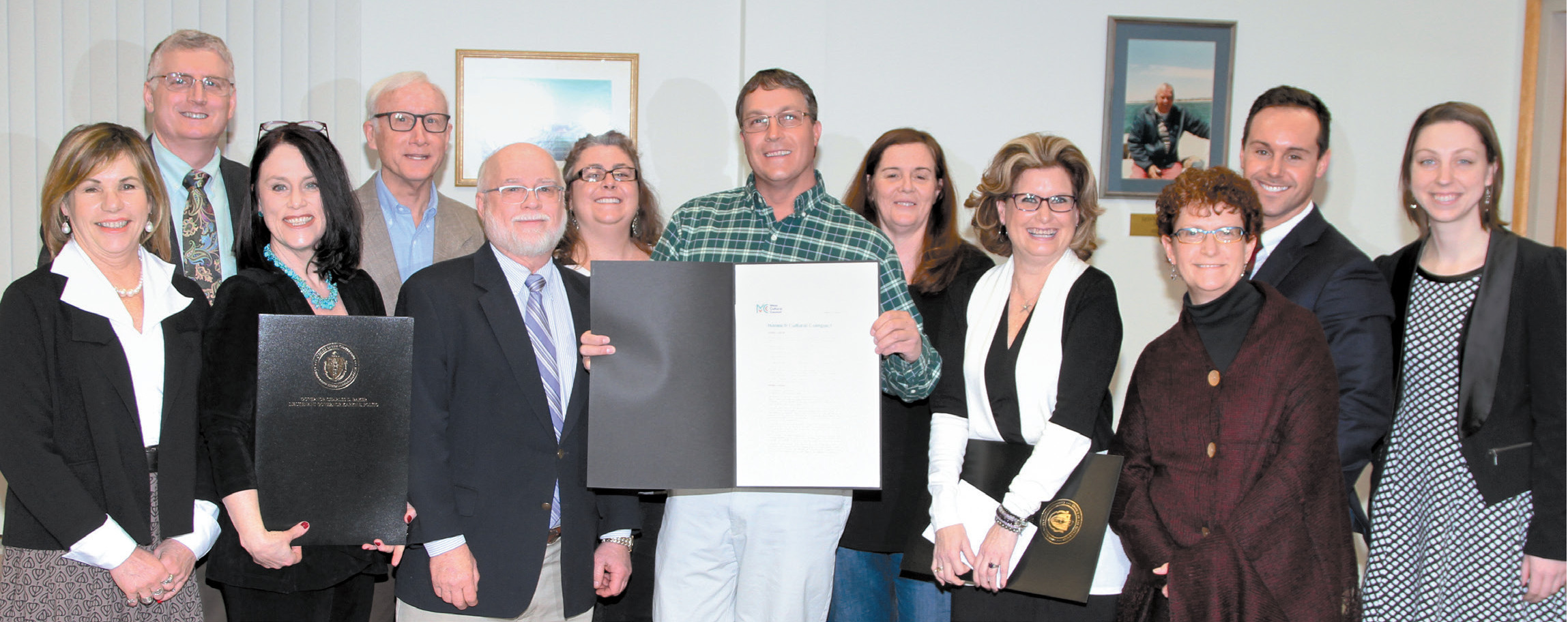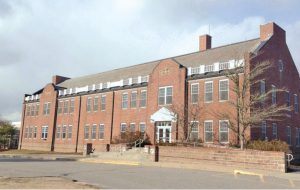(From the Harwich Chamber of Commerce magazine, 2018)
A fixture in Harwich for many years was the former Harwich Middle School, which was built in 1937 and renovated in 1990. With the merger of Harwich and Chatham public school districts and the creation of the Monomoy Regional School District in 2012, the building was no longer needed for use as a school. After much consideration and many discussions about possible visions for the future, it was finally brought to the residents to decide on its fate. Harwich chose to test out the concept of a cultural center, and with that the formation of the Harwich Cultural Center forged ahead. The daunting task of taking this empty school and converting it into the Harwich Cultural Center was given to Carolyn Carey, Director of the Harwich Community Center.
“I can remember walking in the building and thinking, ‘Oh my … really?’” says Carey with a laugh.
The vision was to take the building and transform it into a place that artists, crafters, and visionaries could come and have the space to produce their work in a communal setting.
Many artists create in their homes, garages, basements, and even in their kitchens, yet yearn for a separate space in which to work. Once the word got out that there was a forward-thinking plan to take the former classrooms and convert them into studios, the creative community quickly took advantage of this opportunity.
Let’s meet some of the dynamic individuals who are members of the Harwich Cultural Center.


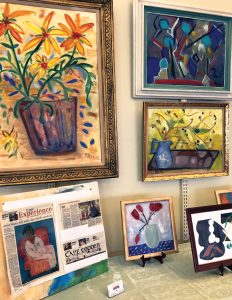
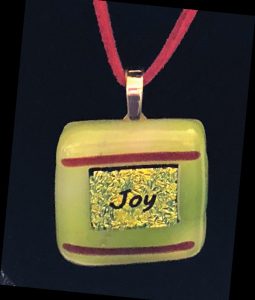
The very first artist to make the Harwich Cultural Center her “getaway” studio was Georgene Riedl. She was in need of a reasonably affordable location where she could escape and find a quiet place to work on her art. She owns the Cross Rip Gallery in Harwich Port, where she showcases many outstanding Cape artists. Riedl’s studio in the Harwich Cultural Center is a former science lab, which is fitting as it has become her laboratory where she experiments with figurative abstract artwork.
A theme that emerges when talking with the artists and artisans at the Harwich Cultural Center is that they value the community that has developed there. Sharon DiGennaro is a potter who also teaches classes at the center, and notes that she is becoming part of a family with the other artists. “It’s about the people and what we will make of it,” says DiGennaro.
DiGennaro, who had suffered a brain injury, sometimes finds herself challenged with connecting the dots, and says her students teach her as much as she teaches them. She is looking forward to teaching silk scarf dying and glass jewelry making, and is looking ahead to using clay, glass, and mixed media in her workshops.
Gail Hickey is a third-generation self-taught artisan in her family. She has been painting and instructing students ranging in age from 10 to 90, and her primary focus for the past 20 years has been on painting “funky” fanciful furniture. She was excited to find this ideal location from which to teach her workshops, which are fun, energizing, therapeutic sessions that allow everyone to learn, express, and create something they never thought they could accomplish. She recently led her ladies golfing group to create 16 birdhouses that were used as centerpieces and then auctioned off at a member event at Cranberry Valley Golf Course.
“We’re becoming such a great community here at the Harwich Cultural Center,” she says.
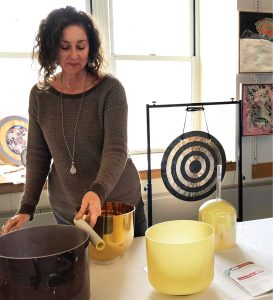
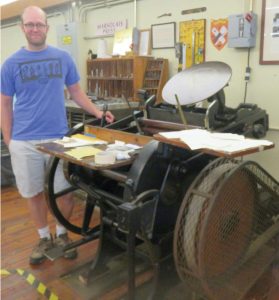
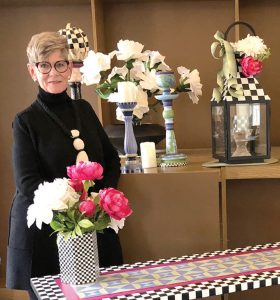
The “Healing Arts” are also well represented at the Harwich Cultural Center. Laurinda Raquel came from the corporate IT world, and after relocating to the Cape, her heart called her on a path to serve, guide, mentor, and inspire others to connect themselves the world around us. Raquel focuses on energy healing through Vibroacoustics, which is the process of hearing sound vibrations through the body. She shares these techniques using instruments such as the tuning fork, and demonstrates how the music resonates through our nerves, skin, and bones. She helps clients work with their bodies to become in balance again.
She felt the space at the Harwich Cultural Center was a perfect community, and has discovered that it is inspiring her and connecting her with her cultural roots. Her goal is to use the healing arts to guide people to find vitality in their lives.
Jesse Marsolais specializes in graphic arts, including letter press and letter carving – which utilize large pieces of equipment. Marsolais and his wife had been trying to find a location for his equipment when they learned of the Harwich Cultural Center. Fortunately, the former school still has a workshop space, which is the ideal location for an incredible Industrial Art Room where Marsolais is able to restore the original dignity of the equipment. His graphic design workshop has an emphasis on traditional methods of production: letter press printing from handset metal type and letter carving in stone with a mallet and chisel, using tools Gutenberg put in motion 500 years ago. He is also looking forward to developing workshops to help students “write the novel you want to read.” He has always invested in learning the craft and his workshop here will shape others in the art.
CCMAKERS… MAKING THE FUTURE!
The Makerspace at the Harwich Cultural Center is a place where individuals can combine manufacturing equipment, community, and education in order to design, prototype, and create manufactured works that wouldn’t be possible with the resources available to individuals working alone. It’s a collaborative learning environment that allows members to work on projects related to science, technology, art, and design. Some of the work in progress includes 3D printing, robotics, music, boat building, and more. This Makerspace is naturally aligned with STEM concepts (Science, Technology, Engineering, Mathematics) and is a great opportunity for the community to explore these areas.
THE BLUE INSTITUTE
A nonprofit with a mission to find solutions for clean and accessible water, both locally and globally. It is organized to bring academic, government, and private sector scientists together with students. The Blue Institute programs seek to design and create strong cross-disciplinary academic programs, research facilities, and water laboratories that take advantage of the unique freshwater and saltwater ecosystems on Cape Cod. The institute seeks to utilize this collaborative environment to spark exciting blue technology innovations that could pave the way for the future of global clean water security and safety. The four critical pillars that the Blue Institute is organized around are: Water-Centric Education, Collaborative Research, Community Service, and Blue Technology Innovation.
Just a year into this endeavor, there is already so much diversity and community within the engaged members of the Harwich Cultural Center. Harwich is at the forefront of innovation with the unique programs and opportunities offered by the Harwich Community Center — and is poised for even further growth. This is just the start of an incredible future sharing the arts and culture of Harwich, as the Harwich Cultural Center embarks on the next phase as part of the Massachusetts Cultural Council’s Cultural Compact Pilot Program. Participation in this program will allow the community to develop and implement two Cultural Districts in Harwich, with a commitment to the idea that culture is an essential element of a strong and vibrant community.
